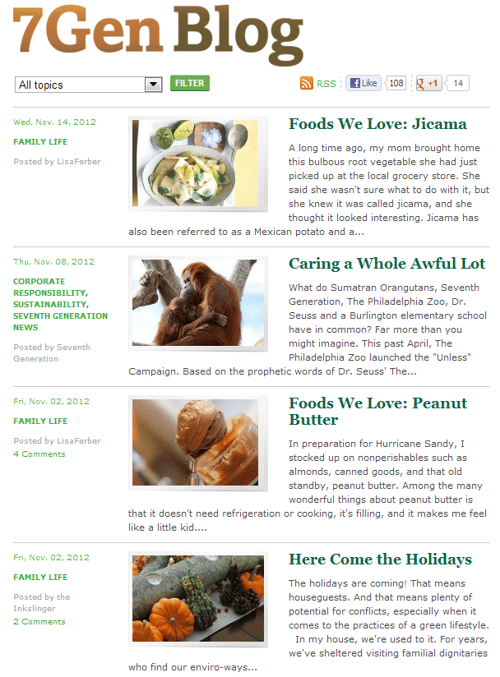Blogging for Ecommerce - Part Two

An effective blogging strategy can help merchants increase their site traffic significantly, and as we inch closer to the busiest shopping season of the year, most merchants live by the mantra, "the more traffic the better."
In fact, a recent HubSpot study reveals that on average, companies that publish 15 or more blog articles per month generate five times more Web traffic than companies that don't blog at all. But aside from bringing in more traffic, blogging can also help merchants foster better relationships with customers and increase their brand's visibility on the Web.
While Part One of Website Magazine's Blogging for Ecommerce series focused on helping merchants develop their content ideas and blogging calendars, Part Two offers tips for the publishing and promotion process. Once the first blog post has been assembled, merchants have many different options for spreading the word about their content, including on their websites, through social channels and within emails - to name a few. So after your copy editor is finished proofreading your first post, review the strategies below for assistance with the promotion process:
Website
If this is your first go-around with blogging, you need to let your current customers know about your new content. The best way to do this is by promoting your blog on your website's landing page, so that the content can be easily discovered by site visitors.
Although you may not want to dedicate a portion of your landing page's valuable space to promoting your blog (especially during the holidays), this problem can be counteracted with two different approaches:
1) Simply add a "Blog" tab to your site's navigational menu bar so that you're not taking up valuable landing page space.
2) Feature a product-centered blog post on the landing page so that you are promoting both products and content.
For example, an apparel retailer could feature a women's gift guide article (which features many of the retailer's products) on the landing page instead of an informative article about fabric types. This solution promotes both the retailer's most popular products and the company's new blog.
Social Media
Word of mouth advertising is easier than ever before thanks to social networks like Facebook and Twitter, which is why merchants should always promote their blog's content within these channels. Not only are your status updates viewable to your brand's social audience, but also any interaction a fan takes with the status update (comments, likes, replies and retweets) will also be visible to all of that fan's friends, which gives content items a better chance of going viral.
Seventh Generation is an example of a retailer that uses a variety of social networks, including YouTube, Facebook and Twitter, to promote its blog. Furthermore, this company's blog posts feature a combination of videos and time-sensitive topics, which helps engage customers and also provides Seventh Generation with a reputation of being an authority on health and the environment.

Although typically a channel for promoting new products and upcoming sales, merchants can also leverage email to share blog content. In fact, customers may find it as a relief to discover a different type of message in their inbox from their favorite retailer, which can help build the brand-customer relationship dynamic. However, with a little innovation, merchants can also take a two-step approach to promoting both their products and their articles.
For instance, a pet supply merchant who wants to promote a new dog collar collection could assemble an email campaign that endorses the new collar line, but also includes a blog post on the topic of collars vs. harnesses. This message has the ability to capture the attention of a variety of consumers, including customers who are actively looking to purchase a new collar, as well as new dog owners who need more information about collars and harnesses before they make a purchasing decision.
Guest Posts
One of the best ways to gain visibility for your blog outside of your immediate customer base is by featuring a guest blogger. Merchants simply need to ask an authoritative figure within their niche to write an article on a popular topic. Once the article is published the merchant can execute the aforementioned strategies to promote the article, as well as have the author promote the article via a link on his or her website and social profiles.
However, merchants can also feature guest content from their community members. For example, shoe and eyewear retailer Toms recently published an impactful blog post about Movember and cancer, which centered around one of the company's customers. While this blog post may not have received as many links as an article written by an industry professional, the message is forceful enough to resonate beyond the Toms community.

Distribution Engines
Last, but certainly not least, merchants can gain visibility for their articles by submitting them to news distribution websites, such as PRWeb, PRNewswire and Businesswire. Numerous journalists and publicists scour these sites every day looking for intriguing topics. By submitting appropriately tagged content to these sites, merchants increase the chances that someone will publish their content or link to their blog. However, it is important to note that merchants will typically garner the best results from these distribution engines by submitting product-specific or metric-driven articles rather than opinion-based topics, because these distribution sites are news driven.








